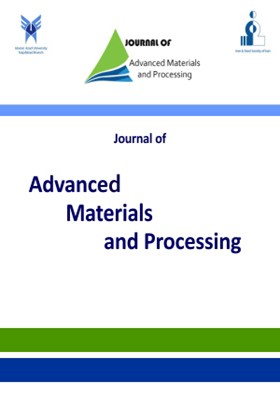-
-
List of Articles
-
Open Access Article
1 - The Study of High Temperature Oxidation behavior of Different Microstructures of HVOF Thermally Sprayed Coatings
Behnaz Saeedi Alireza Rouhaghdam -
Open Access Article
2 - Characterization of nanostructured SnO2 thin film coated by Ag nanoparticles
Monireh Ganjali Mansoureh Ganjali Amir Hassanjani-Roshan Seyed Mohammad Kazemzadeh -
Open Access Article
3 - Passivity of AISI 316L stainless steel as a function of nitric concentration
Arash Fattah-alhosseini Mohamad Ali Sonamia Atena Loghmani Fariba Zerafati Shoja -
Open Access Article
4 - Editorial Board
-
Open Access Article
5 - Increasing the hydrogen storage capacity of single-walled carbon nanotube (SWNT) through facile impregnation by TiO2, ZrO2 and ZnO nanocatalysts
Amir Noroozi Saeed Safa -
Open Access Article
6 - The Effect of Friction Stir Processing Speed Ratio on the Microstructure and Mechanical Properties of A 430 Ferritic Stainless Steel
Ali Salemi Golezani S. M Arab Sh. Javadi Firooz Kargar -
Open Access Article
7 - Synthesis of Nanostructured MnNiAPSO-34 Catalyst: Catalytic Properties and Performance
Parisa Sadeghpour Mohammad Haghighi -
Open Access Article
8 - A new approach for fabrication of bulk MMCs using Accumulative Channel-die Compression Bonding (ACCB)
Alireza Babaei Hosein Jafarzadeh V. Zakeri Mehrabad
-
The rights to this website are owned by the Raimag Press Management System.
Copyright © 2021-2025







